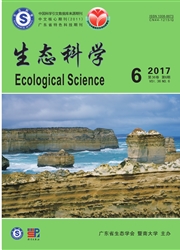

 中文摘要:
中文摘要:
2008年3月采用室内中型受控系统,开展了大型海藻龙须菜(Gracilaria lemaneiformis)对浮游植物群落结构影响的实验研究。实验培养池为9个2m×0.7m×1m的培养池,注入1000L沙滤海水。实验设置3个处理组:对照组(未添加龙须菜)、3kg龙须菜组和6kg龙须菜组,每组3个平行,实验周期为10d。结果表明,未添加龙须菜的对照组发生了中肋骨条藻赤潮,水体浑浊并伴有恶臭,浮游植物细胞密度峰值为3.88×107 cells·L^-1,叶绿素a浓度峰值为43.87μg·L^-1;3kg和6kg龙须菜处理组水体浮游植物细胞密度最高值分别为3.78×106 cells·L^-1和1.33×106cells·L^-1,叶绿素a浓度最高值分别为15.16μg·L^-1和6.69μg·L^-1,均显著低于对照组(p≤0.01)。龙须菜处理组浮游植物种类较多,群落结构较稳定。大型海藻龙须菜作为富营养化水体生物修复材料,可有效提高水质和防治赤潮。
 英文摘要:
英文摘要:
In order to evaluate the effect of seaweed Gracialria lemaneiformis on the phytoplankton community, an indoor enclosure experiment was carried out in March 2008. Nine pools with a capacity of 1 400 L were filled with 1 000 L filtrated seawater. There were three treatments in the experirnent, namely control(without addition of G. lemaneiformis), 3 kg G. lemaneiformis treatment and 6 kg G. lemaneiformis treatment, respectively. The experimental period lasted for 10 days. During the experiment, a Skeletonema costatum algal bloom occurred in the control group with the phytoplankton cell density reaching to 3.88×10^7 cells-L^-1 at the 8^th day, which was significantly higher than the groups with seaweed addition. The highest chlorophyll-a concentration was 43.87 μg·L^-1 in the control group. Low levels of the phytoplankton cell density and chlorophyll-a concentration were observed in the pools with G lemaneiformis. The highest phytoplankton cell densities of 3 kg and 6 kg group were 3.78×10^6 cells·L^-1 and 1.33×10^6 cells·L^-1, respectively. The highest chlorophyll-a concentrations of 3 kg and 6 kg group were 15.16 μg·L^-1 and 6.69 μg·L^-1, respectively. G. lemaneiformis could optimize the phytoplankton community structure meanwhile. This study demonstrates that G. lemaneiformis is a good bioremediation material to improve water quality and thus to prevent red tide occurrence.
 同期刊论文项目
同期刊论文项目
 同项目期刊论文
同项目期刊论文
 Changes of Cellular Superficial Configuration of Symbiotic Algae During Cultivation from Two Anemone
Changes of Cellular Superficial Configuration of Symbiotic Algae During Cultivation from Two Anemone Development of rRNA and rDNA-targeted probes for fluorescence in situ hybridization to detect Hetero
Development of rRNA and rDNA-targeted probes for fluorescence in situ hybridization to detect Hetero Morphological studies on a new marine ciliate, Apokeronopsis sinica n. sp. (Ciliophora: Urostylida),
Morphological studies on a new marine ciliate, Apokeronopsis sinica n. sp. (Ciliophora: Urostylida), Accumulation of heavy metals and total phosphorus in intensive aquatic farm sediments: comparison of
Accumulation of heavy metals and total phosphorus in intensive aquatic farm sediments: comparison of The growth behavior of three marine phytoplankton species in the presence of commercial cypermethrin
The growth behavior of three marine phytoplankton species in the presence of commercial cypermethrin Isolation and identification of a phosphate-solubilizing bacterium Pantoea stewartii subsp. stewarti
Isolation and identification of a phosphate-solubilizing bacterium Pantoea stewartii subsp. stewarti Effects of host starvation on the symbiotic dinoflagellates from the sea anemone Stichodactyla merte
Effects of host starvation on the symbiotic dinoflagellates from the sea anemone Stichodactyla merte Effects of norfloxacin and butylated hydroxyanisole on the freshwater microalga Scenedesmus obliquus
Effects of norfloxacin and butylated hydroxyanisole on the freshwater microalga Scenedesmus obliquus Impact of Environment on the Spatio-Temporal Distribution of Rotifers in the Tidal Guangzhou Segment
Impact of Environment on the Spatio-Temporal Distribution of Rotifers in the Tidal Guangzhou Segment Characterization of marine microplankton communities of Qingdao coastal areas using randomly amplifi
Characterization of marine microplankton communities of Qingdao coastal areas using randomly amplifi Colonization of periphytic ciliated protozoa on artificial substrate in mariculture waters with note
Colonization of periphytic ciliated protozoa on artificial substrate in mariculture waters with note 期刊信息
期刊信息
